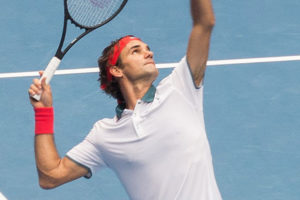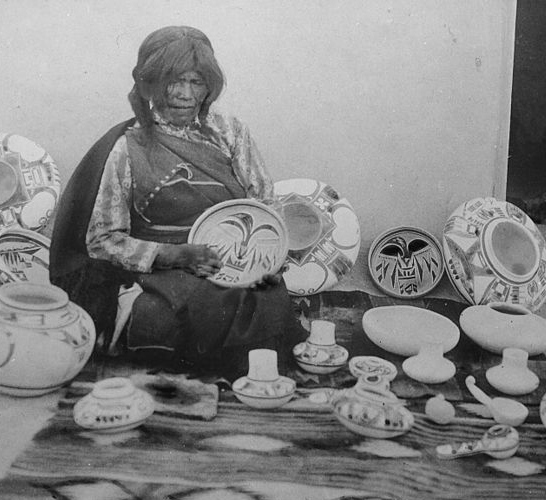
At his Laver Cup in London this past weekend ”“ which Team World won over his Team Europe — Roger Federer ended his professional tennis career, a career that has said as much about the branding of sports figures as it has about his accomplishments.
For many fans and casual observers, he is the G.O.A.T., the Greatest Of All Time, apparently with a self-centeredness to match, which is why the Pseudo Fed Blog, Confessions of a #humble goat, has been so brilliantly entertaining. The real Fed”™s friendly rivalry with Rafael Nadal, called Fedal, has been almost as celebrated as his grace on and off the court. (Federer is one of those elegant men who look as good in tuxedo black as he does in tennis whites.) When author David Foster Wallace lauded the gifts that enabled Federer to dominate men”™s tennis at the turn of this century in the essay “Both Flesh and Not,” it was like John Updike it was like John Updike writing about Boston Red Sox hitter Ted Williams”™ last game. Or Ernest Hemingway describing New York Yankees centerfielder Joe DiMaggio”™s existential struggles as an aging ballplayer in “The Old Man and the Sea.” It elevated an already rarefied athlete to an Olympian plane.
This kind of transcendent branding has enabled Federer to build a billion-dollar portfolio not only out of tournament wins, appearances, exhibitions and sponsorships but by endorsing everything from Mercedes-Benz to Rolex, Moët & Chandon and Uniqlo. Indeed, on Saturday, Sept. 24, Moët & Chandon took out a two-page ad in The New York Times celebrating his accomplishments.
However, as author Oscar Wilde observed, “The truth is never pure and rarely simple.” In Federer”™s case, it was complicated by the rise of Nadal, and fast on his heels, Novak Djokovic and Andy Murray ”” the three who played alongside him in Team Europe”™s losing effort. In the second decade of this century, the “Big Four,” as they were known, would win virtually all of the Slam finals. (It”™s interesting that they are often equated with the “Fab Four,” with Federer as John, Nadal as Paul, Djokovic as George and Murray as Ringo.) As the Fab Four analogy implies, it was never actually an equal quartet. Once Nadal arrived on the scene, his baseline power game didn”™t merely complement Federer”™s balletic serve-and-volley style; it would eclipse it until they were both neutralized by Djokovic”™s more versatile all-court, all-surface approach.
Sports journalist and Tennis Channel commentator Jon Wertheim has said that Federer did not have the opportunity to study Nadal, Djokovic and Murray that they had as teenagers coming up in the ranks to study him. But there”™s another way to look at this: For years, Federer played people who were opponents but not rivals ”” Andy Roddick, Lleyton Hewitt, Marcelo Rios, Marat Safin. They either had a talent commensurate to Federer”™s but not his passion or they had a passion equal to Federer”™s but not his talent. Once his rivals arrived, he had already established a brand that outshone them even as they outstripped him on the court.
The same mirror can be held up to Federer”™s rivalry with Nadal. if you look at the numbers and the matches, the Federer-Djokovic rivalry was longer and more intriguing than Fedal, while the Nadal-Djokovic rivalry ”” often called Rafanole for their nicknames ”” can be more visceral and thrilling and certainly more enduring as it”™s still ongoing.
The New York Times has analyzed the Big Three ”” Nadal, Djokovic and Federer, who have 22, 21 and 20 Slam titles respectively ”” and found that each could make the case for G.O.A.T. But if you look at who has succeeded the most on all surfaces, plus weeks at No. 1 (373), winning edge against the other two and most prize money won ($159 million to date), then the greatest would have to be Djokovic. Yet the Djoker ”” a controversial, edgy, too-eager-to-be-loved figure out of Serbia who came along after Fedal was well established ”” is not the tabula rasa that enabled fans to write their dreams that Federer was. Like his friend Tiger Woods and Björn Borg, who captained Team Europe, Federer learned after some bursts of on-court temper early in his career that the way to succeed in the sports and business arenas was to be careful what you revealed.
So Federer will always be the one ”” the one everyone thinks of when someone says “male tennis player.” Might things have been different had Nadal and company not been five to six years younger? Might Federer have won less or more? Perhaps but perhaps not.
As for the G.O.A.T. argument, it”™s a silly one, isn”™t it? Has time stopped or ended? Maybe the greatest of all time will turn out to be a kid out there in Afghanistan or Sri Lanka, just waiting for fate to push him out onto the world stage someday years from now.
In the meantime, Federer fans can enjoy the man who will surely be remembered as one of the greatest who ever was. And that should be good enough.





















